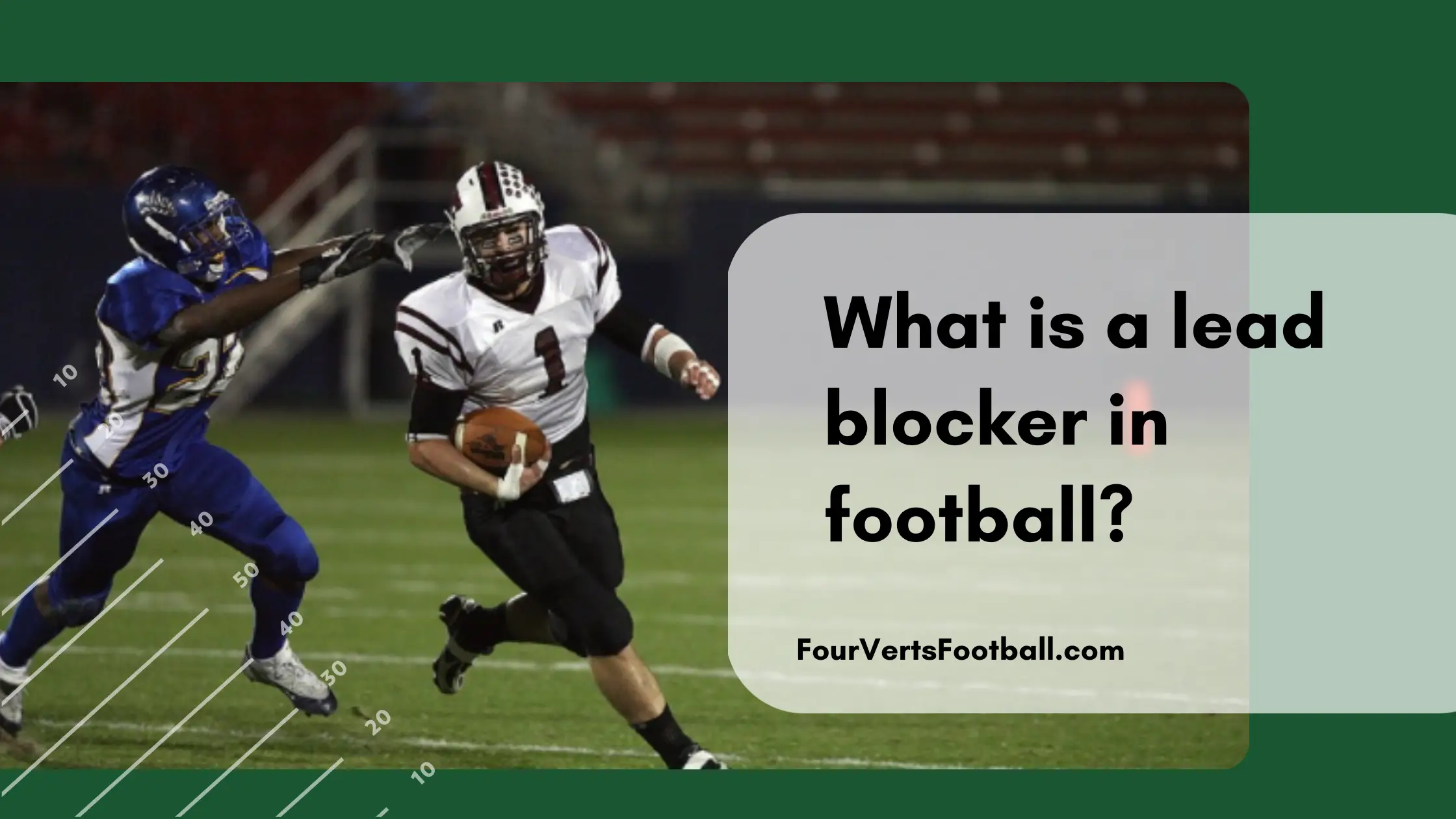A lead blocker in football is a player that will run through the offensive line before the ball carrier in order to block the defender waiting at the other end. Lead blockers are only used on select rushing plays and have seen a decrease in use in recent years.
The majority of lead blocking is done by fullbacks. Though the decline in usage of fullbacks in the NFL has resulted in a decline in lead blocking.
How Does Lead Blocking Work?
On rushing plays, there is going to be a designed hole in the offensive line for the running back to go through.
The lineman will push the defensive line out of the way in order to create this hole. On many rushing plays, the ball carrier will go right through the hole as it opens.
But when using a lead blocker, the ball carrier is going to be the second player to hit the hole.
As the hole begins to open the lead blocker will rush through the hole just as the ball carrier would. As he gets to the other side he will find a linebacker or safety waiting to make the tackle.
The lead blocker will then hit this waiting defender will all of his force. By the time the ball carrier comes through the hole the defender waiting on the other side will have been hit by the lead blocker.
This should allow the ball carrier to get to the next level of the defense.
In most cases, the lead blocker is going to come from the backfield. The i formation is a common setup used for lead blockers because it puts two backs in the backfield.
This formation also places the fullback in front of the running back making it easy for the fullback to play enter the hole first as the lead blocker.
Benefits Of Lead Blockers In Football
Now that you understand what a lead blocker is in football you may be wondering why this method is used. Below we will break down some of the key reasons why lead blockers can be an effective tool in the running game.
They See What The Ball Carrier Sees
One aspect that makes a lead blocker more effective in football is that they are able to get a more accurate look at what the running back is seeing.
When not using a lead blocker a football team will usually have an extra tight end lined up on the offensive line. This player will block his assigned defender but he has no way of seeing where the running back should go.
The lead blocker on the other hand will get a chance to see the defense from the runningbacks perspective before laying out his block.
This will allow the lead blocker to more effectively block in a way that will give the running back more open space.
Take Out A Linebacker
As we stated earlier when not using a fullback as a lead blocker you are likely going to add a tight end to the end of the offensive line.
On these plays, this tight end will either contain a defensive lineman or chip a defensive end and try and land a block downfield.
This can be effective but often times the extra tight ends block is not going to make or break the play.
When using a fullback lead blocker the linebacker ready to make the tackle will be the player getting blocked. After the fullback makes his way through the hole he will hit the linebacker waiting on the other end.
This player is almost always going to be in a position to make a tackle which makes the fullbacks block very effective.
Harder To Read Direction
Another positive factor that comes from using a lead blocker is that it is more difficult to tell which way the run is going. Oftentimes when the fullback is taken out for a tight end the offensive line will have two tight ends added to one side.
This makes it easier to block for runs but unfortunately makes it incredibly obvious which way the play is going to go.
Since the defense knows where the run is going it makes it much easier to stop.
On lead blocking plays the i formation makes it difficult to tell which way the ball carrier will go. Both the fullback and the ball carrier will not tip their running direction until the hole begins to open in the offensive line.

